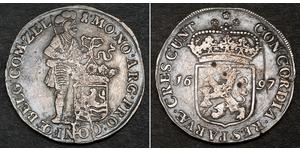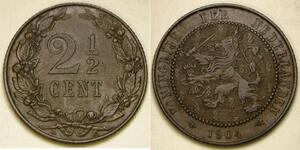(售价 $45.0)
1791, Bohemia, Leopold II. Prague Coronation of Maria Ludovica. Ducat in Silver!
Condition: XF!
Mint Year: 1791
Reference: Mentenuovo 2246.
Denomination: Coronation Ducat (silver strike!) - Prague Coronation of Maria Ludovica as Queen of Bohemia
Diameter: 20mm
Material: Silver
Weight: 2.21gm
Obverse: Bohemian crown above olive-spray and scepter in saltire.
Legend: REGINA ET MATER .
Reverse: Legend in five lines above date (1791) as a roman numeral.
Legend: MAR . LVDOVICA . AVG . LEOPOLDI . II . IMP . REGINA . BOHEMIAE . CORONATA . PRAGAE . XII . SEPT . MDCCXCI .
Maria Louisa of Spain (Spanish: María Luisa, German: Maria Ludovika) (24 November 1745–15 May 1792) was Grand Duchess of Tuscany and Empress of Austria as spouse of Leopold II, Holy Roman Emperor.
Maria Louisa was born in Portici, in Campania, the site of the summer palace of her parents, King Charles VII of Naples and Maria Amalia of Saxony. She was the fifth daughter, and second surviving child, of her parents. Her father became King of Spain as Charles III in 1759, and she moved with her family to Spain.
On 16 February 1764 she was married by proxy at Madrid to Archduke Peter Leopold, the second son of Emperor Francis I and Empress Maria Theresa, and the heir apparent to the Grand Duchy of Tuscany. The next year, on 5 August, she married him in person at Innsbruck. Only a few days later, the death of Emperor Francis made Maria Louisa's husband the new Grand Duke of Tuscany, and the newly married couple moved to Florence, where they would live for the next twenty-five years.
In 1790, on the death of Peter Leopold's childless brother, Joseph II, Maria Louisa's husband inherited the Habsburg lands in Central Europe, and was shortly thereafter elected Holy Roman Emperor. Taking the name of Leopold II, the new Emperor moved his family to Vienna, where Maria Louisa took on the role of imperial consort. Leopold died scarcely two years later, dying on 1 March 1792. Maria Louisa followed her husband to the grave in less than three months, not living long enough to see her eldest son Francis elected as the last Holy Roman Emperor.
Only 1$ shipping on each additional item purcheased!
Leopold II (May 5, 1747 – March 1, 1792), born Peter Leopold Joseph Anton Joachim Pius Gotthard, was Holy Roman Emperor from 1790 to 1792 and Grand Duke of Tuscany from 1765 to 1790. He was a son of Emperor Francis I and his wife, Empress Maria Theresa. Leopold was a moderate proponent of enlightened absolutism.
On the death of his elder brother Charles in 1761, it was decided that he should succeed to his father's grand duchy of Tuscany, which was erected into a "secundogeniture" or apanage for a second son. This settlement was the condition of his marriage on August 5, 1764 with Maria Louisa, daughter of Charles III of Spain and Maria Amalia of Saxony. On the death of his father Francis I (August 18, 1765), he succeeded to the grand duchy.
Leopold, during his government in Tuscany, had shown a speculative tendency to grant his subjects a constitution. When he succeeded to the Austrian lands, he began by making large concessions to the interests offended by his brother's innovations. He recognized the Estates of his different dominions as "the pillars of the monarchy," pacified the Hungarians, and divided the Belgian insurgents by concessions. When these failed to restore order, he marched troops into the country and re-established his own authority, and at the same time the historic franchises of the Flemings. Yet he did not surrender any part that could be retained of what Maria Theresa and Joseph had done to strengthen the hands of the state. He continued, for instance, to insist that no papal bull could be published in his dominions without his consent (placetum regium).
If Leopold's reign as emperor and king of Hungary-Croatia and Bohemia had been prolonged during years of peace, it is probable that he would have repeated his successes as a reforming ruler in Tuscany on a far larger scale. But he lived for barely two years, and during that period he was hard pressed by peril from west and east alike. The growing revolutionary disorders in France endangered the life of his sister Marie Antoinette of Austria, the queen of Louis XVI, and also threatened his own dominions with the spread of a subversive agitation. His sister sent him passionate appeals for help, and he was pestered by the royalist emigrants, who were intriguing to bring about armed intervention in France.
From the east he was threatened by the aggressive ambition of Catherine II of Russia and by the unscrupulous policy of Prussia. Catherine would have been delighted to see Austria and Prussia embark on a crusade in the cause of kings against the French Revolution. While they were busy beyond the Rhine, she would have annexed what remained of Poland and made conquests against the Ottoman Empire. Leopold II had no difficulty in seeing through the rather transparent cunning of the Russian empress, and he refused to be misled.
To his sister, he gave good advice and promises of help if she and her husband could escape from Paris. The emigrants who followed him pertinaciously were refused audience, or when they forced themselves on him, were peremptorily denied all help. Leopold was too purely a politician not to be secretly pleased at the destruction of the power of France and of her influence in Europe by her internal disorders. Within six weeks of his accession, he displayed his contempt for her weakness by practically tearing up the treaty of alliance made by Maria Theresa in 1756 and opening negotiations with England to impose a check on Russia and Prussia.
He was able to put pressure on England by threatening to cede his part of the Low Countries to France. Then, when sure of English support, he was in a position to baffle the intrigues of Prussia. A personal appeal to Frederick William II led to a conference between them at Reichenbach in July 1790, and to an arrangement which was in fact a defeat for Prussia: Leopold's coronation as king of Hungary on November 11, 1790, preceded by a settlement with the diet in which he recognized the dominant position of the Magyars. He had already made an eight months' truce with the Turks in September, which prepared the way for the termination of the war begun by Joseph II, the peace of Sistova being signed in August 1791. The pacification of his eastern dominions left Leopold free to re-establish order in Belgium and to confirm friendly relations with England and Holland.
During 1791, the emperor continued to be increasingly preoccupied with the affairs of France. In January, he had to dismiss the Count of Artois, afterwards Charles X, king of France, in a very peremptory way. His good sense was revolted by the folly of the French emigrants, and he did his utmost to avoid being entangled in the affairs of that country. The insults inflicted on Louis XVI and Marie Antoinette, however, at the time of their attempted flight to Varennes in June, stirred his indignation, and he made a general appeal to the sovereigns of Europe to take common measures in view of events which "immediately compromised the honour of all sovereigns, and the security of all governments." Yet he was most directly interested in the conference at Sistova, which in June led to a final peace with Turkey.
On August 25, he met the king of Prussia at Pillnitz, near Dresden, and they drew up a declaration of their readiness to intervene in France if and when their assistance was called for by the other powers. The declaration was a mere formality, for, as Leopold knew, neither Russia nor England was prepared to act, and he endeavoured to guard against the use which he foresaw the emigrants would endeavour to make of it. In face of the agitation caused by the Pillnitz declaration in France, the intrigues of the emigrants, and the attacks made by the French revolutionists on the rights of the German princes in Alsace, Leopold continued to hope that intervention might not be required.
When Louis XVI swore to observe the constitution of September 1791, the emperor professed to think that a settlement had been reached in France. The attacks on the rights of the German princes on the left bank of the Rhine, and the increasing violence of the parties in Paris which were agitating to bring about war, soon showed, however, that this hope was vain. Leopold met the threatening language of the revolutionists with dignity and temper.
He died suddenly in Vienna, in March 1792.
Like his parents before him, Leopold had sixteen children, the eldest of his eight sons being his successor, the Emperor Francis II. Some of his other sons were prominent personages in their day. Among them were: Ferdinand III, Grand Duke of Tuscany; the Archduke Charles of Austria, a celebrated soldier; the Archduke Johann of Austria, also a soldier; the Archduke Joseph, Palatine of Hungary; and the Archduke Rainer, Viceroy of Lombardy-Venetia.
1 Ducat 荷蘭共和國 (1581 - 1795) 銀
本组有 10 钱币 / 9 售价
⇑
22 coins were grouped from 2025-06-11 to 2025-06-18
其中一个是:
2 1/2 Cent 荷兰
本组有 18 钱币 / 14 售价
⇑








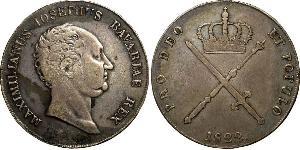


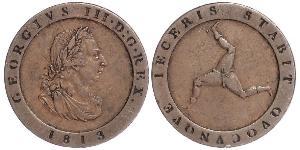

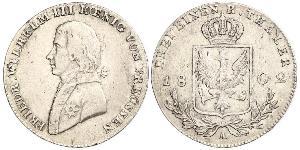
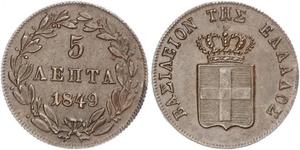

-300-150-nf4K.GJAcbQAAAEu7g61Lgu3.jpg)
